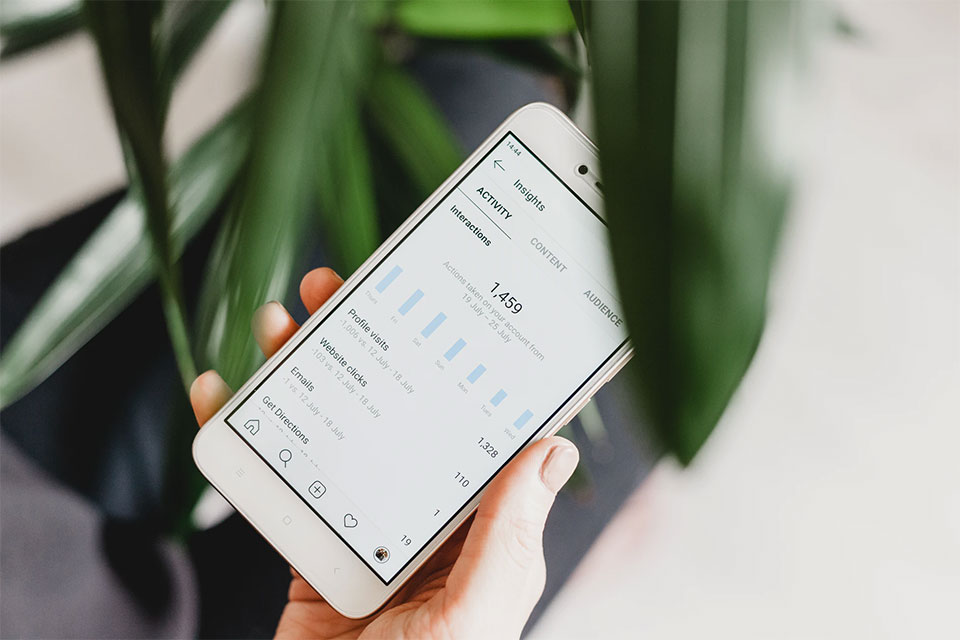Influencer Marketing Tips for Student Entrepreneurs

The room for influencer marketing is bigger than ever before. The pandemic influenced it: the number of followers of many bloggers has increased dramatically. When a brand reaches out to people through a trusted person, it is much more effective than direct advertising to a doubtful audience. And from the users’ point of view, influencer marketing has many advantages as well.
First of all, a chance to see detailed feedback on how a product works and getting to know it before buying is a great benefit. Also, thanks to influencers we can find amazing stuff that we’ve never heard before, and even get promo codes.
So, influencer marketing is really worth it. In this article, we have collected tips on how to turn it into a successful sales tool.
Reach VS. Relevance
Years ago, brands were aimed at partnering with bloggers with a large number of followers. It was considered that a wide campaign reach guarantees better results. But eventually, it didn’t always work. What truly matters is choosing an influencer that is relevant to your brand.
It is important that the target audience not only gets to know your brand, but also remembers it. Try engaging multiple influencers who are followed by the same people. Let your message be seen in the feed over a certain period of time.
Of course, all the steps mentioned above may seem impossible to complete if you are also studying.
The workload of any student entrepreneur is huge. And if you ever think of a professional who can write a research paper – relax. Various services on the web can complete the task for you at any time. Then, you’ll have more energy to concentrate on your business without worrying about the grades.
Who Are Micro Influencers?
In fact, influencers are not bloggers only. According to Forbes magazine, there are six types of them: celebrities, journalists, industry experts, outstanding personal brands, analysts, mediators.
As for the number of subscribers,
Micro influencers have 5-100 thousand followers;
Macro influencers have 100 thousand – million followers;
Meega influencers have over a million followers.
Beginner entrepreneurs better work with micro influencers whose posts ensure greater audience engagement. Followers of such people know them well, really trust their tips and believe that their advice is worth following. In addition, such audiences are active, as interaction and communication between an influencer and followers happen on a deeper level.
Limited Audience is Key
Influencers talk to their subscribers every day. They know which posts will be popular and approved, and which won’t generate interest at all. Therefore, influencers can deliver an advertising message in such a way that it is positively perceived by the target audience.
Advertising which engages celebrities and macro influencers focuses on promoting the brand. But advertising through small influencers brings real leads and sales, as subscribers rely on their opinion when choosing products and services. Plus, content posted by influencers goes viral when being shared by followers.
- Before Collaboration
What is your main goal: to increase brand awareness, raise sales, and make users follow your company’s social media profile? The answer will determine your next steps: the choice of the channel and the type of content the influencer is about to post. - Describe Your Audience
Make a portrait of your consumer, thinking of such characteristics as age, gender, place of residence, income, place of work, needs and desires. This will help when choosing influencers, as a clear understanding of what kind of audience you are looking for is vital. - Types of Content
Basically, there are three forms of content, and each has its pros.
Stories have revolutionized the way content is perceived. Its advantage is a more realistic presentation. Stories look more authentic than a specifically tailored and retouched post. In stories, there might be influencer’s reviews about a product, showing how to use it or integrating it into their daily life.
In addition, an influencer can insert a hyperlink so that users can immediately go to your company’s website.
A sponsored post allows you to promote the brand’s Instagram page, offer a unique promo code. By the way, this helps to track the campaign’s effectiveness.
Live streaming is another viable advertising option. It can be fully devoted to the product (review, Q&A), or the blogger can simply mention the product when your audience needs advice on a specific topic. - Make a List of Influencers
Use different approaches. If you are looking for experts in the field, monitor industry media or professional blogs, browse the lists of speakers at conferences.
As for bloggers, try to find one that meets your requirements, and then look at similar profiles on Instagram. Also, check the users the influencer follows or tags in posts – these might be similar bloggers as well.
Have you ever heard of blogger exchange platforms? We recommend turning to Epicstars, trendHERO, or Influence.co. These sites offer convenient filters for finding influencers by certain parameters, and, of course, they are not free of charge.
Another way is to turn to agencies that work with influencers. They will help you select the best person to collaborate with and give you a hand with developing a creative concept and message. But note that the cost of their services can be rather high.
So, now you have an initial list of influencers you want to work with. But before you do, take two things into account.
First of all, analyze the content they post. How does it correspond to the image of your brand? Are there any controversial topics? Can some publications negatively affect your reputation? Examine audience engagement: how actively they comment on posts, whether comments look fake.
Some services help check if there are any fake likes, views, or comments. For this, use LiveDune, Hype Auditor, or trendHERO. - Offer Cooperation
First, prepare a letter with a clear proposal – there must be a brief, timing, payment, a chance to agree on content before publication. Second, collect all the materials that will help an influencer get acquainted with the product: its description, marketing kit, video. Keep track of all your actions in an Excel spreadsheet: to whom the offer was sent and when, what are the requirements of the influencer, prices, published publications and the result. - Track Performance
Set KPIs and conduct research before and after the campaign. Accumulate data – after all, it’s all about the final result. Use UTM (Urchin Tracking Module) tags to track conversions to your landing page or website.
So, here’s what you need to know about influencer marketing. First, study the influencer and their profile (content and advertising collaborations with other brands). It is worth considering such indicators as subscribers, reach, audience engagement, comments and tone of voice.
Work only under a contract and discuss the brief in detail. The influencer must accurately understand your offer and come up with their solution.
Bring the best of the CEOWORLD magazine's global journalism to audiences in the United States and around the world. - Add CEOWORLD magazine to your Google News feed.
Follow CEOWORLD magazine headlines on: Google News, LinkedIn, Twitter, and Facebook.
Copyright 2025 The CEOWORLD magazine. All rights reserved. This material (and any extract from it) must not be copied, redistributed or placed on any website, without CEOWORLD magazine' prior written consent. For media queries, please contact: info@ceoworld.biz








